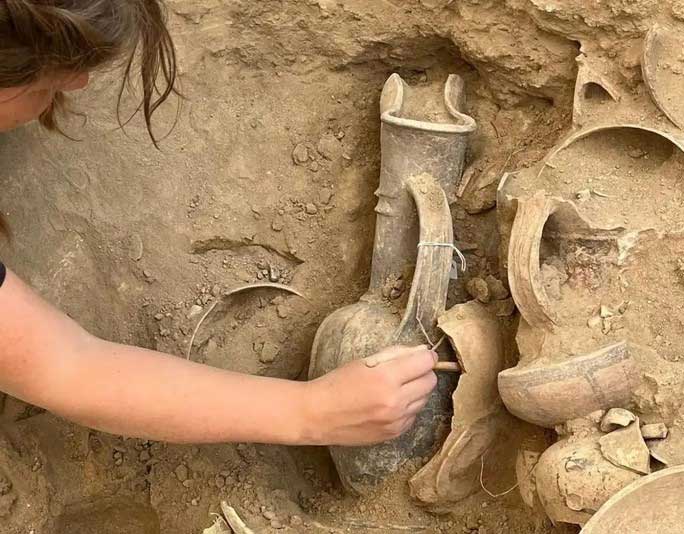An ancient tomb, estimated to be 1,300 to 1,500 years old, has recently been excavated along the southeastern coast of Cyprus. This site may serve as the final resting place for members of an unknown royal family, containing over 500 artifacts.
According to Heritage Daily, the aforementioned ancient tomb was discovered using ground-penetrating radar, a device commonly employed in geophysical surveys to detect magnetic anomalies deep within the earth.
The magnetic anomalies that revealed this site are not a mysterious phenomenon; they are simply due to the abundance of metal artifacts inside, indicating that the individuals buried here were extremely wealthy.

A vast collection of artifacts has been gathered from the ancient tomb along the coast of Cyprus – (Photo: PETER FISHCHER).
Previously, this area had raised suspicions as farmers plowing the land frequently uncovered shards of pottery that did not belong to modern times.
This site is one of the most lavish ancient burial complexes in the Mediterranean region, comprising two burial chambers measuring up to 4×5 meters, interconnected and accessible via a narrow passageway leading to the surface.
The excavation, led by Professor Peter Fishcher from the University of Gothenburg (Sweden), has unearthed over 500 treasures made of precious metals, gemstones, ivory, high-quality ceramics, along with several bronze weapons.
Most of these treasures or their raw materials were imported from neighboring civilizations, further enhancing the opulence of the ancient tomb. Gold and ivory were imported from Egypt, gemstones from Afghanistan, India, and Sinai, while amber was brought from the Baltic region.
The excavations also revealed several well-preserved human remains. Notably, the skeleton of a woman surrounded by dozens of pottery vessels, valuable jewelry, and a round bronze mirror was found.
Some individuals, both male and female, were adorned with crowns and necklaces featuring precious pendants that may have been produced in Egypt centuries before their time. All these artifacts hold unparalleled value, dating back 1,300 to 1,500 years.
Due to the limited documentation regarding ancient dynasties in the region, scientists have yet to determine which nobles were laid to rest in this tomb.


















































